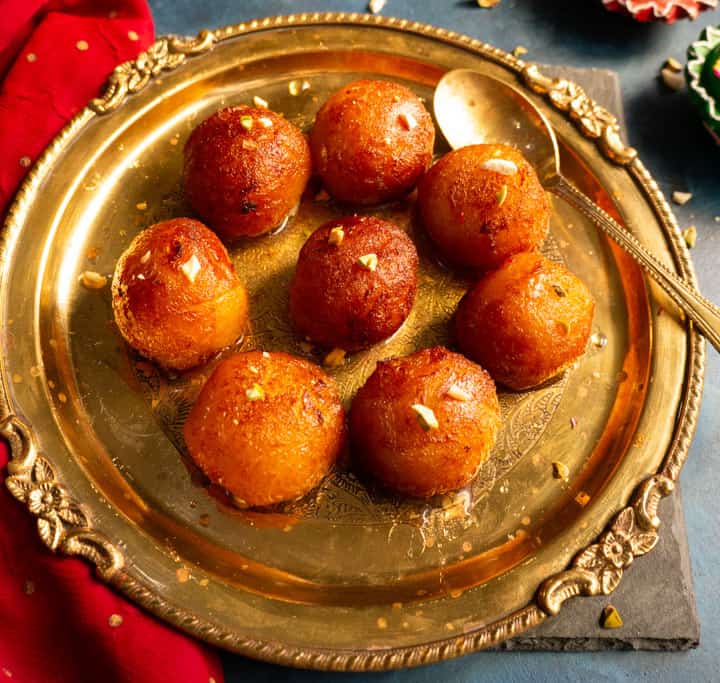Published 15:20 IST, December 15th 2024
The Curious Case Of Gulab Jamun In India
Gulab Jamun connects the hearts of Indians through a sweet tale of passion, royalty, and history dating back to Mughal-era.
- Lifestyle News
- 2 min read
The beloved confectionary Gulab Jamun has cemented a sweet corner in every Indian sweet lover's heart. This readily available sweet which locals in Banaras call Kaleja, given its soft texture that melts in a jiffy as soon as you place it on your tongue to savour it, actually traces its roots to Persia.
Gulab Jamun was first presented in the kitchens of nawabs during the Mughal era in India as a dessert for the creme-de-la-creme of society. Later, it paved its way into India's local cuisine in variations based on local preference.
What truly evoked a point of difference among the other desserts was the use of khoya, a dairy product made from evaporated milk, making it a preferred sweet among royals.
As time move on, people residing in this south Asian nation started relishing its taste at local mithai shops in India. Today, it symbolizes the culinary legacy that's readily available across the country.
The term “Gulab” is derived from the Persian word for “rose,” which reflects the rosewater-infused sugar syrup that envelopes the fried dough balls. The syrup’s delicate fragrance evokes images of blooming roses, aligning perfectly with the dessert’s luxurious appeal. The second part of the name, “Jamun,” refers to the Indian blackberry, known for its deep purple-black colour.

The festive flavour that unites India
This reference is significant as Gulab Jamun’s shape and colour resemble that of the jamun fruit, creating a visual connection that enhances its allure. Together, the name “Gulab Jamun” embodies both the essence of its ingredients and the cultural influences that have shaped it over centuries. This charming nomenclature not only highlights the dessert’s flavours but also connects it to India’s diverse culinary heritage, emphasizing how this beloved sweet treat has transcended time and geography to become a cherished symbol of celebration and indulgence.
Gulab Jamun has evolved from a royal dessert into a beloved staple at Indian celebrations, weddings, festivals, and religious events. Its journey from the palaces of the Mughal emperors to the homes of millions showcases its universal appeal. This decadent sweet is often featured on festive occasions like Diwali and Eid, symbolizing joy and togetherness. Its presence at weddings, where it is served to guests as a sign of hospitality, reflects its significance in Indian culture.
Updated 15:22 IST, December 15th 2024